The Importance of Soil and what to look For
If you’ve thought about growing anything, you’ve probably already thought about soil. You likely didn’t give it that much thought, though, because who takes time to think about soil? Well, the soil that you grow your marijuana in is very important, so if you want to grow the best Cannabis possible, you should pay some attention to it.
The Importance of Soil

Plants typically need three things to survive: water, light, and soil. Soil may seem obvious, but nowadays, with soil alternatives and hydroponic growing, even that is optional. However, for most growers, especially those who are new to growing marijuana, growing in soil is the best option.
Soil growing (instead of growing in nutrient-infused water) is one of the easiest and most familiar methods of growing. It’s also one of the most natural ways to grow any plant. Plus, attempting to grow hydroponically the first time you are growing marijuana is almost guaranteed to be a recipe for disaster.
Soil is simply the natural way to grow, but it is still important to start with a good quality soil. After all, it provides the plant’s nutrients and helps the plant form stable roots. High-quality soil is especially important for outdoor plants who could face potentially harsh winds and other environmental conditions.
The composition of soil
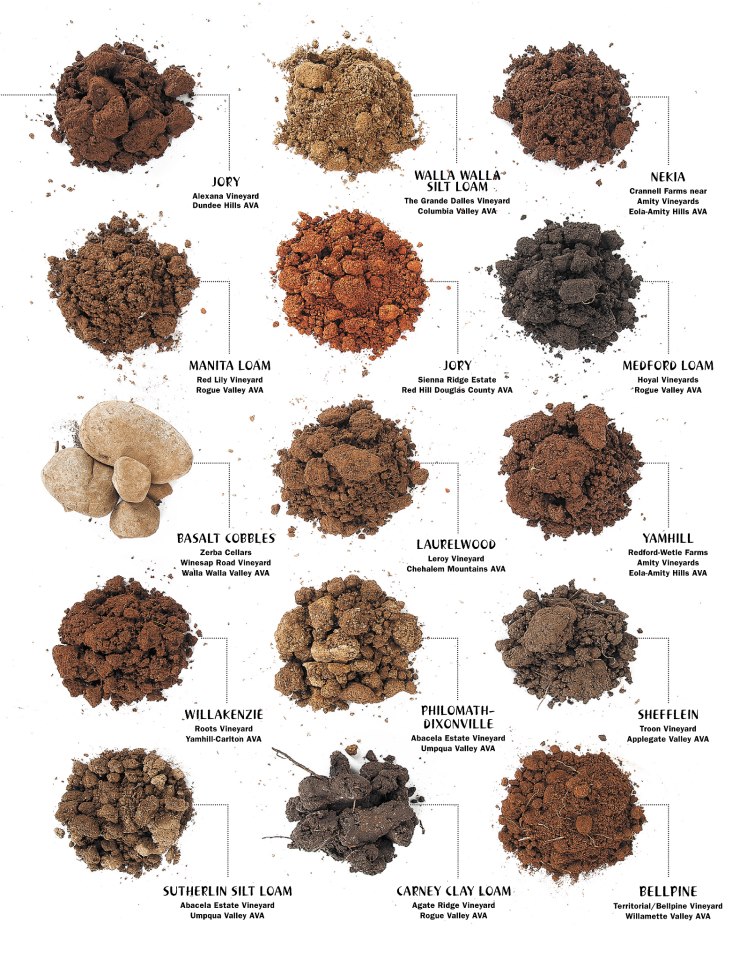
Great soil can help your plants thrive, so it is essential to first understand what soil is. It is definitely more than dirt. Natural soils are made up of mineral particles, air, organic matter, water and biological organisms.
Air: Nearly 25% of soil is air that exists in a gaseous phase –not quite liquid or solid.
Water: Water is known as soil solution, a liquid made of water, and ions from dissolved salts, and chemicals. These ions are unable to attach to minerals in the soil. Water also makes up nearly 25% of soil. The mineral particles in soil consist of sand, clay, and silt. These inorganic particles can significantly impact a soil’s quality.
Sand: These tiny fragments of rocks and hard minerals (such as quartz) do not carry any nutrients, meaning large amounts of it in your soil is a bad thing. Soil with lots of sand is arid; however, small to moderate amounts can improve drainage and aeration as well as increase tilling quality.
Silt: This mixture of sand and minerals has some nutrients, but not many.
Clay: Clay is beneficial for soil, as it can include the important nutrients of K, Ca, Mg and Fe- making soil fertile. Clay is aluminum-silicate and has negatively charged ions that attract these nutrients to it. However, if there is too much clay, it will be hard to till the soil, and there will also be poor drainage.
Soil also includes a variety of organic matter and substances such as:
- Decomposing plant and animal particles
- Organisms and microorganisms living in the soil
- Substances produced by roots and microorganisms
These exist in smaller amounts, typically around 5%. Although there isn’t much organic matter in soil, its presence highly influences its quality and the eventual yield of your plants. The particles and substances are also known as humus, whereas organisms may include earthworms and other beneficial creatures.
Recognizing good soil
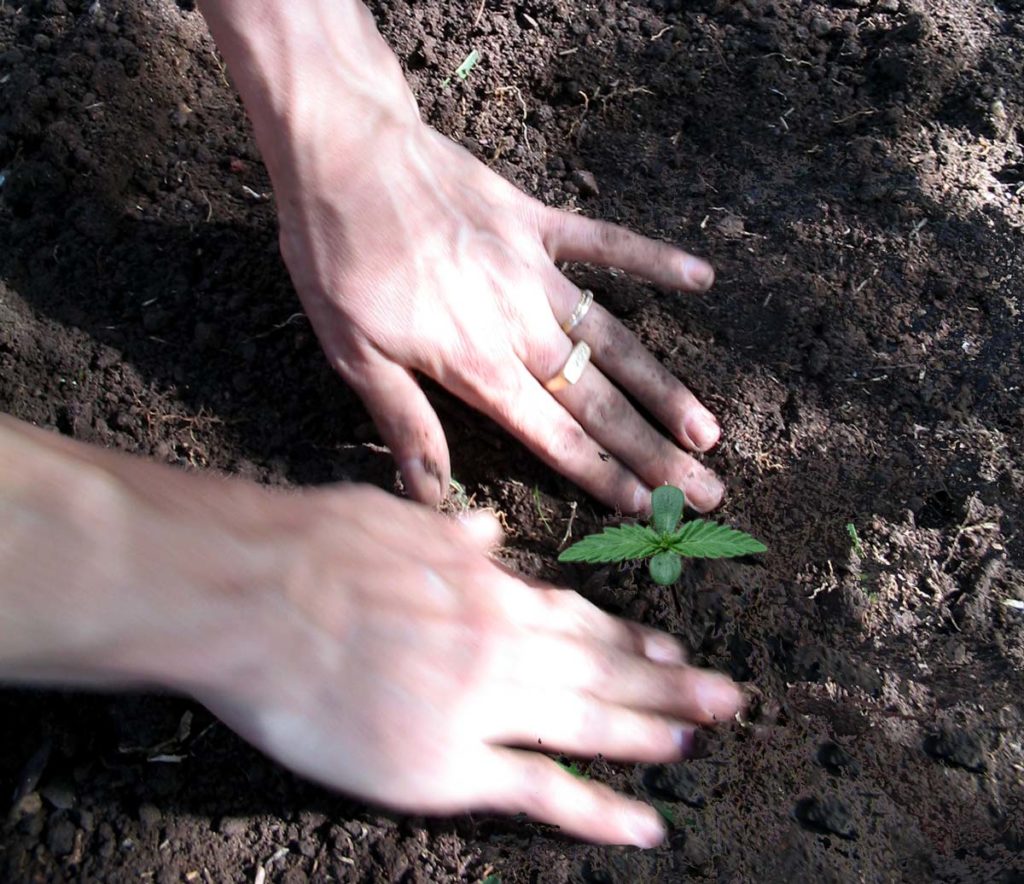
Now that you understand what soil is, it is much easier to recognize good soil when you see it. Marijuana soil has some specific requirements, so unless you are buying soil that is specifically designed for cannabis, you’ll want to learn to pay attention to certain things. Good soil will have the correct texture, drainage ability and water retention for marijuana. It will look dark and rich, with a loose texture that isn’t muddy.
Good Cannabis soil also drains well – you should be able to pour water on it and have it drain out within a few seconds. The soil should retain enough water for the plant to thrive, as the roots need that water, but it shouldn’t be so much that the roots cannot get enough oxygen either. This is why both proper drainage and water retention are essential aspects of good soil.
Good soil also has good ingredients. Of course, soils that include some form of organic matter (humus) are great for marijuana because they provide plenty of nutrients. Some examples of organic matter to look for in a good cannabis soil include:
- Earthworm castings (My Personal Choice)
- Bat Guano (My #1 Personal Choice)
- Blood, fish, or bone meal
- Kelp (My #1 Personal Choice) Has tons of everything!
- Coco Coir
- Mycorrhizae (always use Mycorrhizae)
- Perlite (always use Perlite)
- Pumice
- Sandy Loam
- Dolomite lime
- Vermiculite (always use Vermiculite)

If you purchase soil that has any of these ingredients in it, there’s a good chance it might provide great nutrition for your plants. You’ll still want to make sure that it has the right nutrients for your plant’s particular stage in its lifecycle though, also be sure to check the Ratios of each..
Choosing soil for your plants
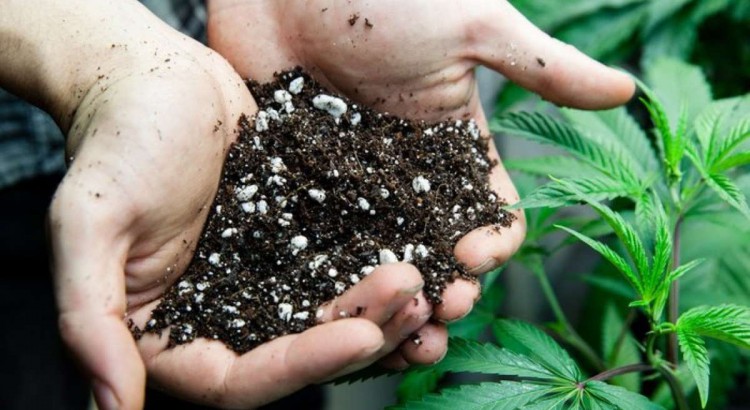
With an understanding of what you are looking for, you can now start to select the right soil for your plants. The first thing to remember is that soil is highly dependent on the stage of life that your plant is in. While it is still sprouting, it is best to use peat plugs or something similar to that. These ready-made blocks of soil provide everything that a budding seed needs to make its way into the world. If you can’t find, (or don’t want to use) peat plugs, an organic potting soil will also work. Organic soils will not have any added ‘slow-release’ chemicals, something you’ll want to avoid when growing marijuana.
While potting soils do not have the right type of nutrients to support a growing marijuana plant, they will have enough to support a seedling for its first couple of weeks. After that point, you’ll want to supplement with nutrients that are specifically designed for marijuana plants – especially once you reach the flowering stage.
Another reason why it is okay to use potting soil (at least at first) is because you’re likely going to end up moving your plants after they are about a month old anyway. The roots will be too big for their first home, and you should place them in a bigger container or move them outdoors. That is the perfect time to switch out your soil for something more suitable. If you used peat plugs, you can simply add the plugs to local dirt or grass mulch to make a suitable soil outdoors. Not only does this provide a better texture over the natural earth, but it also offers ample room for young roots to move around and increases the nutrient value in the soil.
You can also move your seedlings into either sterilized potting compost or a “living soil.” If you opt for sterilized soil, it should include some form of amendment (such as perlite), that makes up at least 20% of the soil. This additive will help increase the amount of air present in the soil, which helps marijuana plants grow faster.
Living soils, on the other hand, are composted soils. They are useful because they include microorganisms that create an ecosystem similar to the best natural scenario. The roots directly absorb the nutrients produced from these organisms, and the results are often noticeable in the flavor and scent of the harvest. Living soils rarely require added nutrients since the microorganisms provide all the nutrients that your plant will need. You’ll want to re-pot your plants just before flowering if you use this type of soil.
What to look for in store-bought soil
- Avoid time-released chemicals. They release nutrients throughout the plant’s life. During the flowering stage, your plants will need different nutrients, and you’ll have a hard time adjusting the soil to fit the changing needs of your plant.
- Look for dark, rich soil. Pale, crumbly or sandy soil probably has too much sand or the wrong moisture levels. It probably also does not have the right nutrient levels.
- Touch it if you can. Good soil should form into a ball when you squeeze it and fall apart when you open your hand. It should be fluffy, light and airy.
You can also simply make your own soil – especially if you live near an organic farm. Cow and pig excrement that has rested for at least a year is wonderful soil. In fact, it is often sold as high-quality fertilizer since it has most of the nutrients that plants require. You could even mix it 50-50 with sand and produce amazing yields. Another option is topsoil from excavation companies.
How to make average soil better
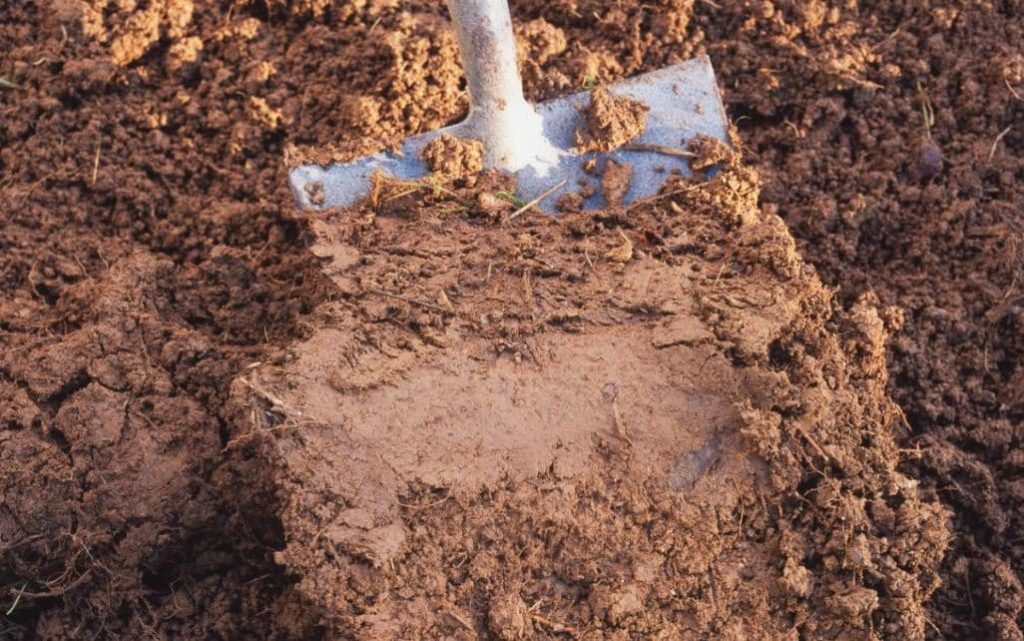
If you’re starting with sterilized potting soil, mediocre topsoil or any other soil that you aren’t particularly happy with, you can add things to it to make it better. Some of the best soil amendments are easy to obtain and make a big difference on you soil. Try some of the following “added ingredients” to make your soil even better:
Perlite
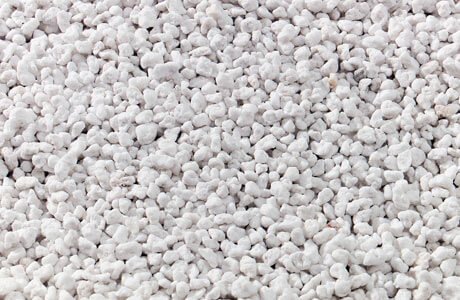
Add perlite to any soil that doesn’t already have it. These light airy ‘rocks’ will add oxygen and increase its drainage ability. Perlite can be up to 40% of the total volume depending on your needs. Use more of it if you plan to use a lot of nutrients and want to protect against nutrient burn.
Coco Coir

Coconut makes everything better – at least when it comes to soil. Coco coir is made from the husks of coconuts. It improves water retention without making the soil heavy, decreases the chance of overwatering and helps with root development. Coco coir is a great soil alternative, but if added to existing soil keep it under 30%.
Vermiculite
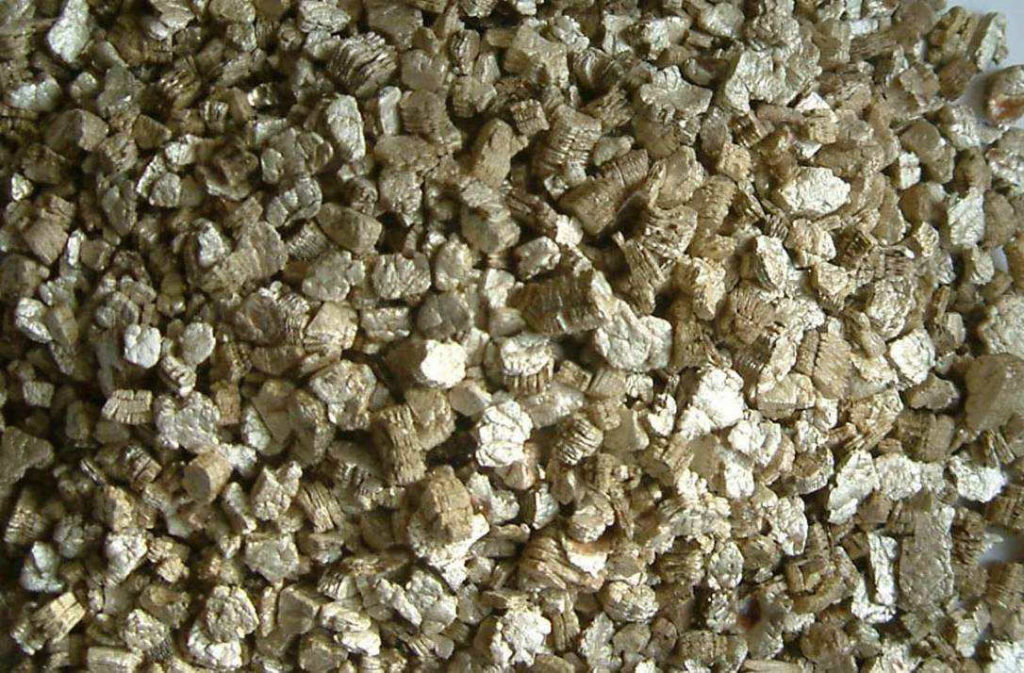
If your soil is too heavy, you can add this substance to lighten it up. It also improves water retention, just like perlite, but it does a better job of it. Unlike perlite, it doesn’t do a good job of improving aeration and drainage, but if you need help with that, you can add them both. Just choose which one you need more, and only add a little of the other. The combination of vermiculite and Perlite should not be more than 50% of your soil.
Worm Castings
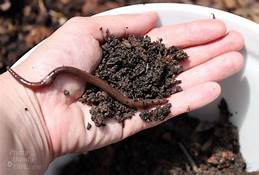
Worms excrete nutrients that cannabis plants love, and thankfully, you can buy this worm poop and add it to your soil. Worm castings improve the texture of your soil, moisture retention, and drainage. If you have this additive, you will not need to add anything else. You can safely make worm castings up to 30% of your soil.
Creating a Super Soil
If you’re feeling creative, you can make a special kind of homemade soil called super soil. Super soil has added slow-release nutrients and then it is composted for months. By composting it, the soil becomes a living soil in that it has microorganisms, which are extremely beneficial for the root structure of your plants. Roots feed these microorganisms, and in exchange, they feed your plants. With super soil, you’ll never need to worry about nutrients or measuring the pH because nature does all the work for you.
Super soil has some obvious benefits, such as a better taste and smell in your harvest, but there are a few drawbacks as well. This amended soil is expensive and time-consuming to make, so it’s not economical for the everyday grower unless you are growing other things as well. It also slows the growth of your plants (when compared to liquid nutrients) because your plant needs time to absorb all those goodies provided by the microorganisms. Nutrients in a liquid form are much easier for plants to absorb.
If you decide to create super soil, however, you are creating the optimal environment for your plants, whether they are grown indoors or out. All you need to do is remember to water.
Your growing medium can either help or hinder your plants, so you’ll want to choose the best one for your situation. If soil is your medium of choice, that means ensuring it has the right qualities for optimal growth. With the right soil, your level of effort significantly decreases as your quality of bud increases. That’s a nice slope!